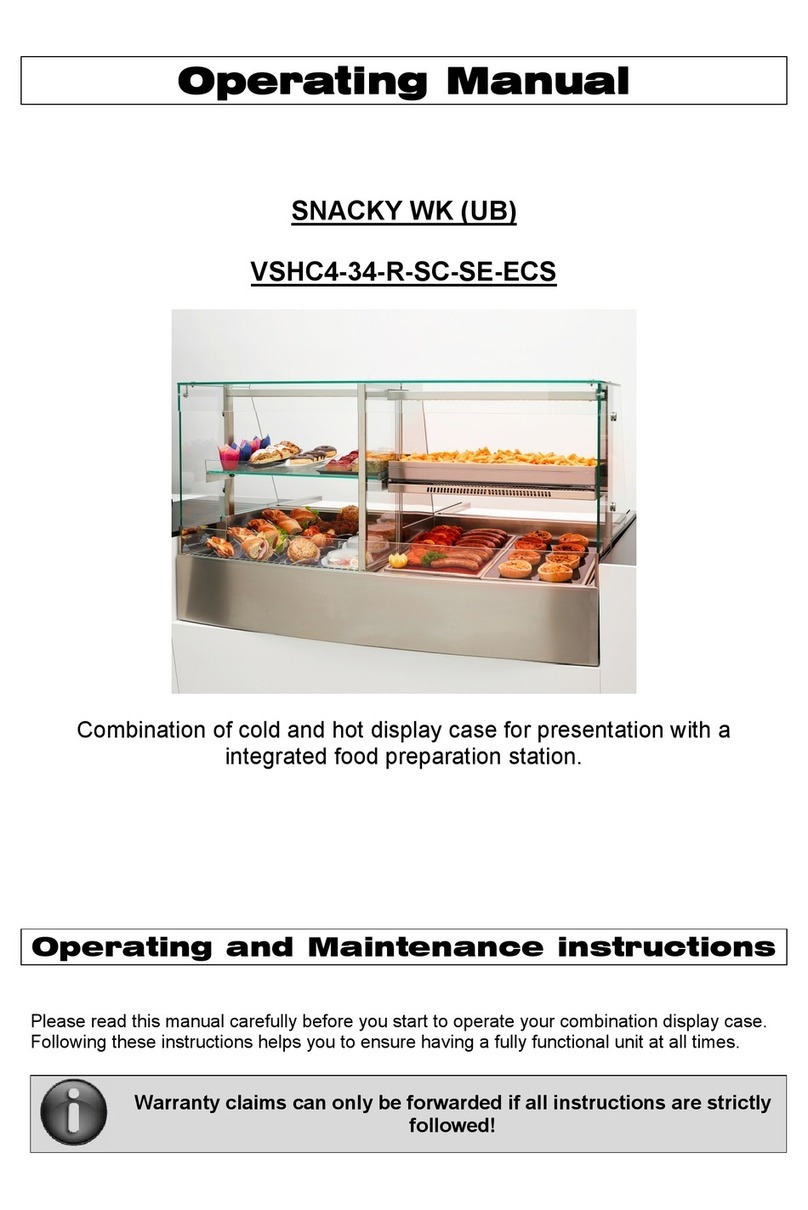
Valid from: April 2012 Technical changes reserved Page 3
DOC: OM_VIAP Vienna Air Pans (12A)
OPERATING AND MAINTENANCE
1. Introduction
1.1. Welcome
With the purchase of this new refrigerating equipment you have decided on a product that combines
the highest technical demands with practical service comfort. We recommend that you read these
operating and maintenance instructions carefully in order to become familiar with the product quickly.
With the proper treatment you will enjoy this appliance for a long time. Please keep these operating
and maintenance instructions to consult in case any maintenance and repairs are needed.
We wish you successful business and much pleasure with this appliance.
1.2. Fundamental Safety Notes
THE CONNECTIONS AND ANY TECHNICAL ADAPTATIONS ON THE
REFRIGERATED EQUIPMENT ARE ONLY TO BE CARRIED OUT BY
SPECIALISTS! THIS IS ESPECIALLY VALID FOR ANY WORK ON THE
COOLING TECHNOLOGY, ELECTRICAL INSTALLATION, WATER CONNECTION
AND MECHANICAL WORK.
ANY ADAPTATION IS TO BE AUTHORIZED BY THE MANUFACTURER!
Those covers bearing a warning may only be opened by specialists!
The bottom and back panels are not to be cleaned by water jet.
Protective covers and devices may not be removed due to risk of injury!
The control system may only be opened by an expert.
Air currents near the refrigerating unit resulting from improperly installed ventilation or draughts
are to be avoided, in order to ensure the efficient functioning of the refrigerating unit.
The surrounding temperature may not exceed 75°F; the relative humidity may not exceed
55% over a long period of time.
Due to risk of injury, sharp objects are not to be stored loosely in the refrigerating unit.
Any glass parts are to be treated with the necessary care in order to avoid injuries resulting from
broken glass.
Components and operating equipment may only be replaced by original parts.
1.3. Warranty and Liabilities
Fundamentally, our "General terms of sale and delivery“ are valid. These are known to the operator
upon the signing of the contract at the latest. Claims of warranty and liability for damage to persons
and property are not possible, if they result from one or several of the following causes:
Improper use of the unit.
Improper assembling, starting up, operating and servicing of the unit.
Operating the unit with defective safety devices or safety devices which have not been installed
properly and are not in working condition.
Disregard of the references in the operating manual concerning transportation storage,
installation, start-up, operation, maintenance and assembling of the unit.
Unauthorized mechanical or electrical changes to the unit.
Insufficient maintenance of wear and tear parts.
Unauthorized repair.
Extreme environmental concern, fire, explosions etc.




























